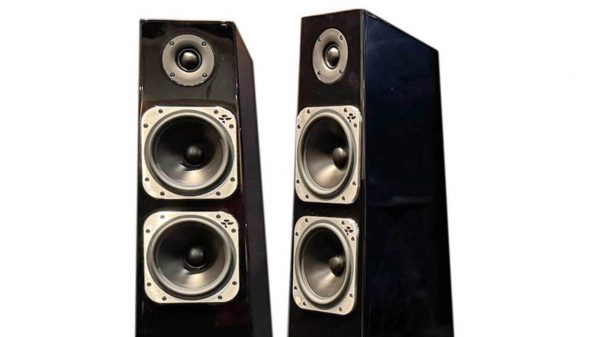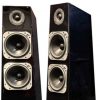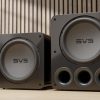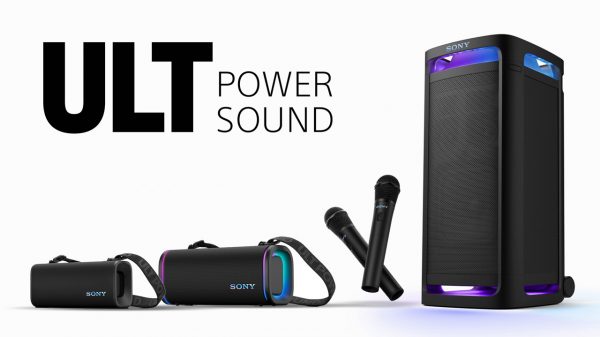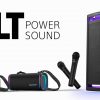We review a rather wide range of headphones, earphones, Dongle DACs, and DAPs over the course of a year, and it would be fair to say that the focus has been on the mid-tier and upper end of the market.
The reality is that 99% of the market is focused on products below $400; something that is especially true for earphones and headphones. Both products have become commodities and rather disposable. The market below $100 was generally filled with a lot of average sounding products, but advancements in technology have changed that. Brands like 1More have focused on the $50 to $200 market and done rather well doing so.
1More was founded by three former Foxconn/Xiaomi executives as an offshoot of Xiaomi and has expanded from its original headquarters and manufacturing facility in Shenzhen, to a brand new R&D and testing facility that is located in San Diego, California.
The company’s aim is to produce high-quality budget friendly headphones and earphones. One will not find $400 headphones in their lineup and that focus on affordability has allowed them to gain market share.
We have already reviewed 1More’s traditional-fit true wireless earphones, including the Piston Pro ($49.99, $39.99) and Evo ($169.99, $86.99), which happen to be on sale right now.
The fitness/active category is a huge source of growth in the wireless segment and almost every brand has a range aimed at these types of users; the 1More Fit S50 ($149.99, $113.99) and Fit SE S30 ($69.99, $54.99) models were sent to us for review this month and we discovered that they offer a lot of performance for the money.

Both of these bar shaped earphones sit on the ear which offers the benefit of situational awareness; something that is rather important for those who might go running or walking in the early morning or after dusk.
If you can’t hear someone approaching in the dark or a sudden car horn, you are putting yourself in a dangerous situation.
The design makes them more of an ear speaker versus a traditional IEM.
While the two models share the same basic shape, there are enough differences that we needed to look at each model separately. And as a spoiler — not every difference favours the more expensive S50.
1More Fit (S50)
The S50 or 1More Fit is the flagship model and currently retails for $149 but can often be found on sale for as little as $114.
The earpieces are a bar roughly an inch long, half an inch wide, and roughly 3/8ths inch thick with an earhook that exits the front edge of the bar and an ear tip that exits the rear of the bar.
Unlike conventional earphones, the ear tip is not designed to sit in the ear canal but instead sits just inside the antitragus, which acts as a wave guide while also providing support.
Weight is approximately 9 grams per earpiece and well distributed which keeps them in place when exercising. The earpieces are also sealed and IPX7 rated which makes them almost waterproof; something which is important to those who run outside in the rain or might take them to the beach or the swimming pool.
Internally, the S50 uses 1More’s PurePower dynamic driver with a diamond-like-carbon (DLC) diaphragm and dual magnet structure to offer more power and control than a typical dynamic driver. Most earbuds suffer from considerable bass roll-off due to the lack of seal so this higher potency driver is used to combat the roll-off and loss of some frequencies caused by the open-air design.
The S50 uses Bluetooth 5.3 and supports the SBC and AAC codecs; we had no issues connecting to a Samsung smartphone or iPhone 14.
Connectivity strength was good as long as we kept our source device within 5 meters of the earphones and maintained line of sight. When you remember that most users will likely have their source device hidden inside a pocket when running or exercising, the connectivity range will never be an issue.

It may seem odd that an open-air earphone includes active noise cancellation (ANC), but the 1More Fit S50 does not function like most ANC earphones.
Instead, the noise cancelling focuses on removing background noise during outgoing phone calls so the person on the other end of the call only hears your voice and not your surroundings.
That is a good thing, but took some getting used to, because it doesn’t internally suppress outside noise.
The battery provides eleven hours of use per charge, and supports a quick charge; 10 minutes of charging nets two hours of listening time.
The case provides another two full charges and a third partial charge before needing to be recharged itself. The case supports both wireless and USB charging but is fairly large and best reserved for a backpack or purse rather than stashing inside of your pants pocket.

We found the controls to be rather responsive with a quick tap of the face pausing the music or answering a call. The app allows users to configure the double and triple tap settings and allows for differing controls on each earpiece which is something I have grown to prefer.
While on the subject of the app, the S50 version of the app offers the ability to turn on/off various functions, update the firmware, change tap settings, turn on low latency, and select from twelve EQ presets but does not offer a custom EQ.
Conversely, the S30 has a custom EQ but lacks the presets, which seems odd because we would have expected the flagship model to be the more customisable of the two.
1More should address this deficiency with a firmware update.

Listening
The S50 has more sub-bass impact than anticipated which is often a casualty of open designs. The S50 masterfully sidesteps the issue and provides enough bass depth, articulation, and clarity to sound more like a loudspeaker than an earbud.
The mid-bass delivers a solid degree of punch; percussion comes across as properly weighted and with strong clarity and detail.
1More’s PurePower driver combined with a rather specific tuning boosts the low end and lower treble which will appeal to those who desire a punchy sounding earbud that adds some top end energy to pop music.
The lower midrange comes across as being slightly recessed, but not enough to make male vocals take a step back behind the instrumentation or to rob guitar notes of their presence in the lower registers.
Vocals are delivered with accurate timbre, but with less energy than their female counterparts.
Violin and acoustic guitar are presented with accurate tonality and a strong sense of energy.
Female vocals experience a bit of a lift in the upper midrange and lower treble and one hears that on poorly recorded tracks where they can sound somewhat nasally, but stop short of becoming strident.
The lower treble is boosted through to around 5kHz giving percussion good snap and cymbals some needed energy. There is an airiness to the sound that can be partially attributed to the open design and the overall tuning that provides just enough energy without sounding fatiguing.
One of the advantages of the design is that the soundstage is rather large, although the waveguide tips keep it from feeling as large as the S30 in terms of depth and width.
Both deliver fairly consistent soundstage height.
The imaging is good with the orchestra seated straight forward and only somewhat wider than it needs to be; there are no large overlaps or gaps across the stage.
We did notice a mild degree of compression in the low end with specific tracks that were complex and filled with rapid dynamic shifts. There was also some distortion when listening levels were pushed above 75 per cent.
1More Fit SE (S30)

The 1More Fit SE (S30) is similar in design to the S50 from the perspective that both use a bar and hook shape, but the S30 bar is shorter, thicker and lacks the ear-tips of the S50.
Instead, there is a metal grate flush with the inner surface of the bar that hides the driver behind it. This limits the S30 to an IPX5 rating making it splash resistant but not waterproof.
The outer surface of the bar also has a touch sensor with the same tap codes as its bigger brother. The inner surface shares the dual pin charging pads as well.
The bar design more closely resembles models from Bose and Cleer.
The downside is that the hooks are somewhat stiff and as a glasses wearer, I found the S50 a bit more comfortable to wear than the S30.
Internally, the S30 uses Bluetooth 5.3 (again with support for the SBC and AAC codecs) to power a 14.2mm dynamic driver with a diamond like carbon diaphragm.
While the drivers are similar, the S30 does not use the PurePower design and thus isn’t capable of being driven quite as hard or as loud as the S50.
The S30 does sport two microphones per earpiece and uses a simplified version of the ANC found on the S50 to reject outside noise during phone conversations.

Battery life is 10 hours and the case provides 2 full charges, but does not support wireless charging or quick charging. The case is roughly the same size as the S50 but is more elongated and narrower making it easier to carry in your pocket.
It is still considerably larger than the charging case for the Apple AirPods.
The app offers the ability to customise the tap controls, update the firmware, and customise the 10-band equalizer.
How does the S30 Sound?
Bass is less impactful than the S50 and the presentation is a bit closer to earbuds like the Smabat line that emphasise the mid-bass region hitting your ear; percussion still has sufficient impact, but timpani suffers somewhat due to some roll-off.
The midrange is emphasised more on the S30 and vocals are pushed forward of the instrumentation; in almost every scenario, the vocalist appears to be locked in place in the middle of the soundstage at a rather close distance. Intimate to say the least.
There is a reasonable amount of detail and good clarity but a slight decrease in energy when listening to string instruments.
The treble feels somewhat restrained compared to the S50 but it is still on the brighter side; the open design does positively impact the airiness and top end detail creating a more spacious sounding presentation.

Comparison
| S30 | S50 | |
| MSRP | ||
| Design | Open-Air Tech | Open-Air Tech |
| Driver | 14.2 mm DLC Dynamic Driver | 1MORE PurePower Dual Magnet Driver |
| Bluetooth Version | Bluetooth 5.3 | Bluetooth 5.3 |
| Playtime Per Charge | 10 hrs | 11 hrs |
| Total Playtime with Charging Case | 30 hrs | 38 hrs |
| Fast Charging | – | Yes (5 minutes = 2Hrs Playback) |
| Environmental Noise Cancellation | 4 ENC Mics + AI Algorithm | 4 ENC Mics + DNN AI Algorithm |
| Weight Per Earbud (With Case) | 63 grams | 79.7 grams |
| WaterProof | IPX5 | IPX7 |
| Charging Time (Earbuds/Case) | 90/120 min | 80/90 min |
Which One is Right For You?
The S50, with its semi in-ear style, offers the soundstage of an earbud with the bass of an earphone. It is quite unique in that respect and the resultant sonic signature combined with the situational awareness around the listener is a combination I really like and can see multiple use cases for.
The case could be smaller and the absence of a customisable EQ which is offered on the S30 is a negative. The regular retail price is still rather reasonable for the comfort and overall sound quality. If you can find these on sale, they make a rather excellent pair of workout wireless earbuds that are completely waterproof.
For those with a smaller budget, the S30 offer above average sound quality and certainly stay in place during workouts. Unlike the more expensive S50, they are not waterproof but should be fine in regard to sweat when working out.
The battery life, durability, and customisable EQ make them a real bargain at $54 USD. You will be very hard pressed to find anything better at that price.
1More’s new Fit lineup are a success for a number of reasons; durability, sound quality, comfort level, ANC performance that works reasonably well with phone calls, and above average battery performance.
If you can find these on sale, they are a no-brainer for yourself or as a Christmas gift.
Where to buy:
- S30:
$69.99$54.99 at 1More | Amazon
- S50:
$149.99$113.99 at 1More | Amazon
Related Reading:




















